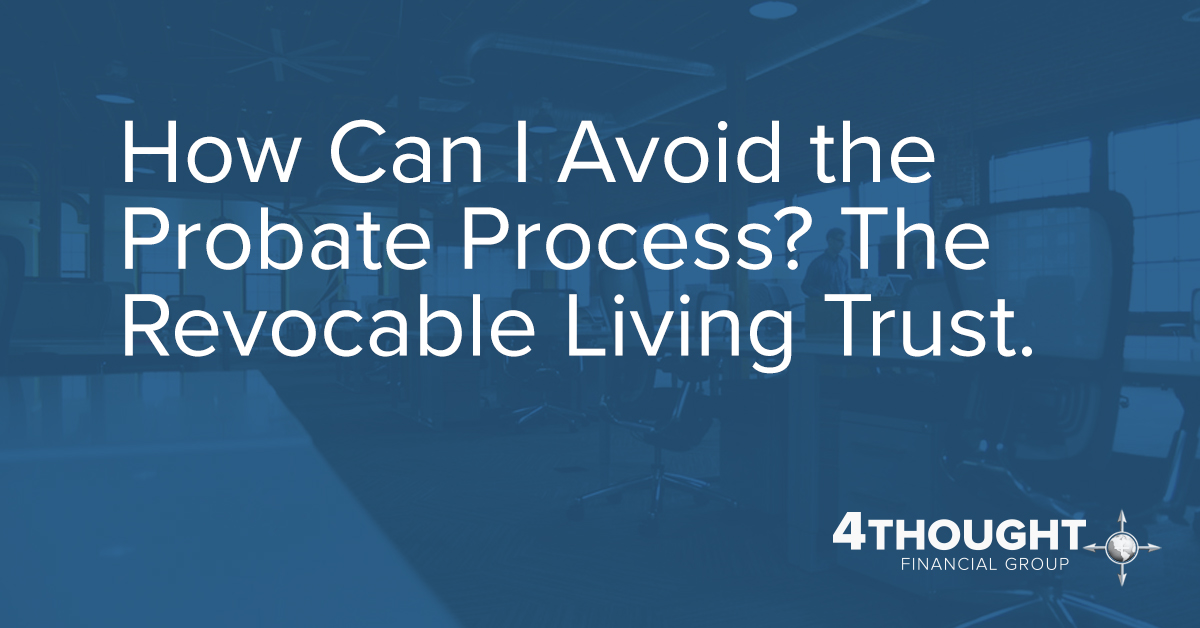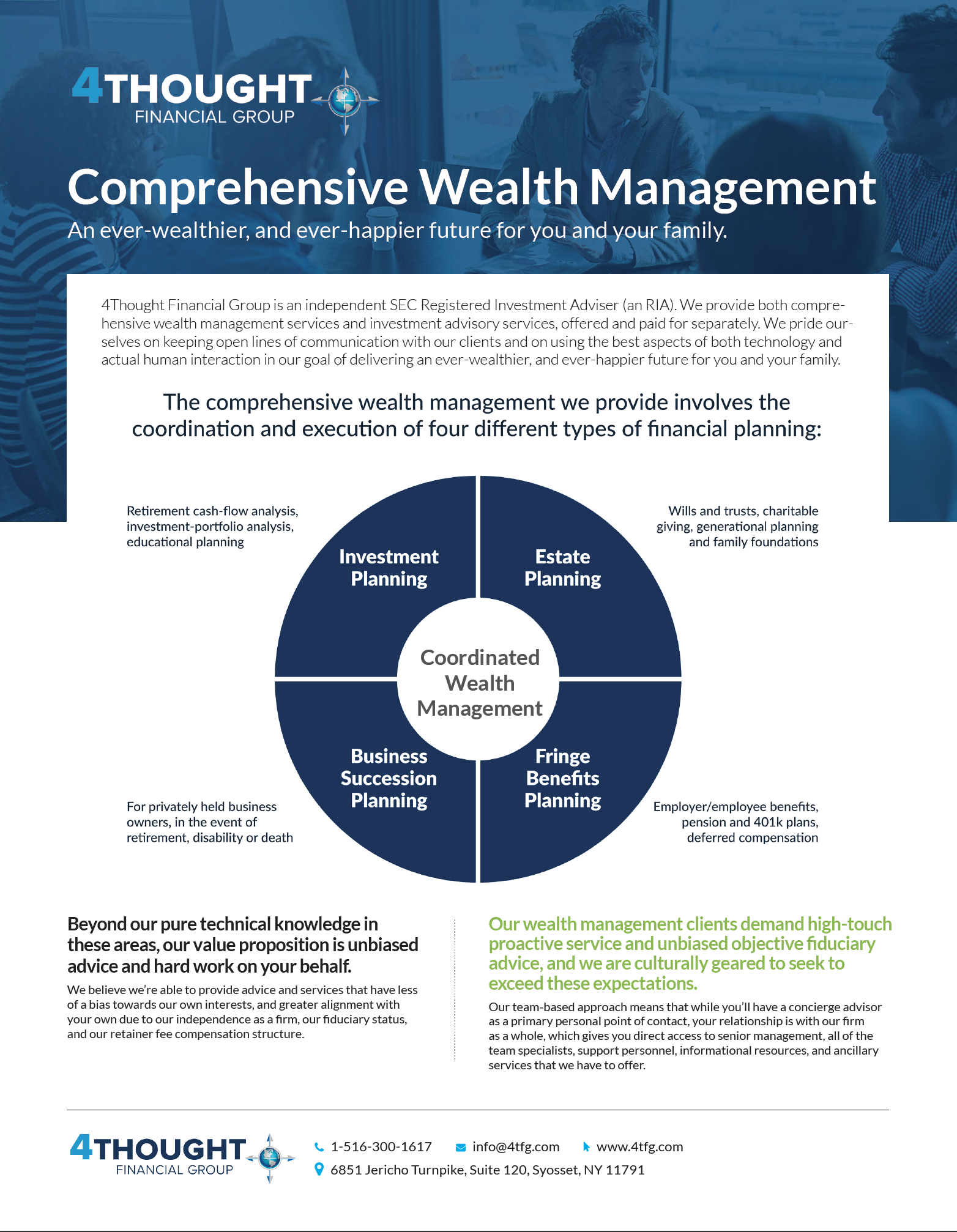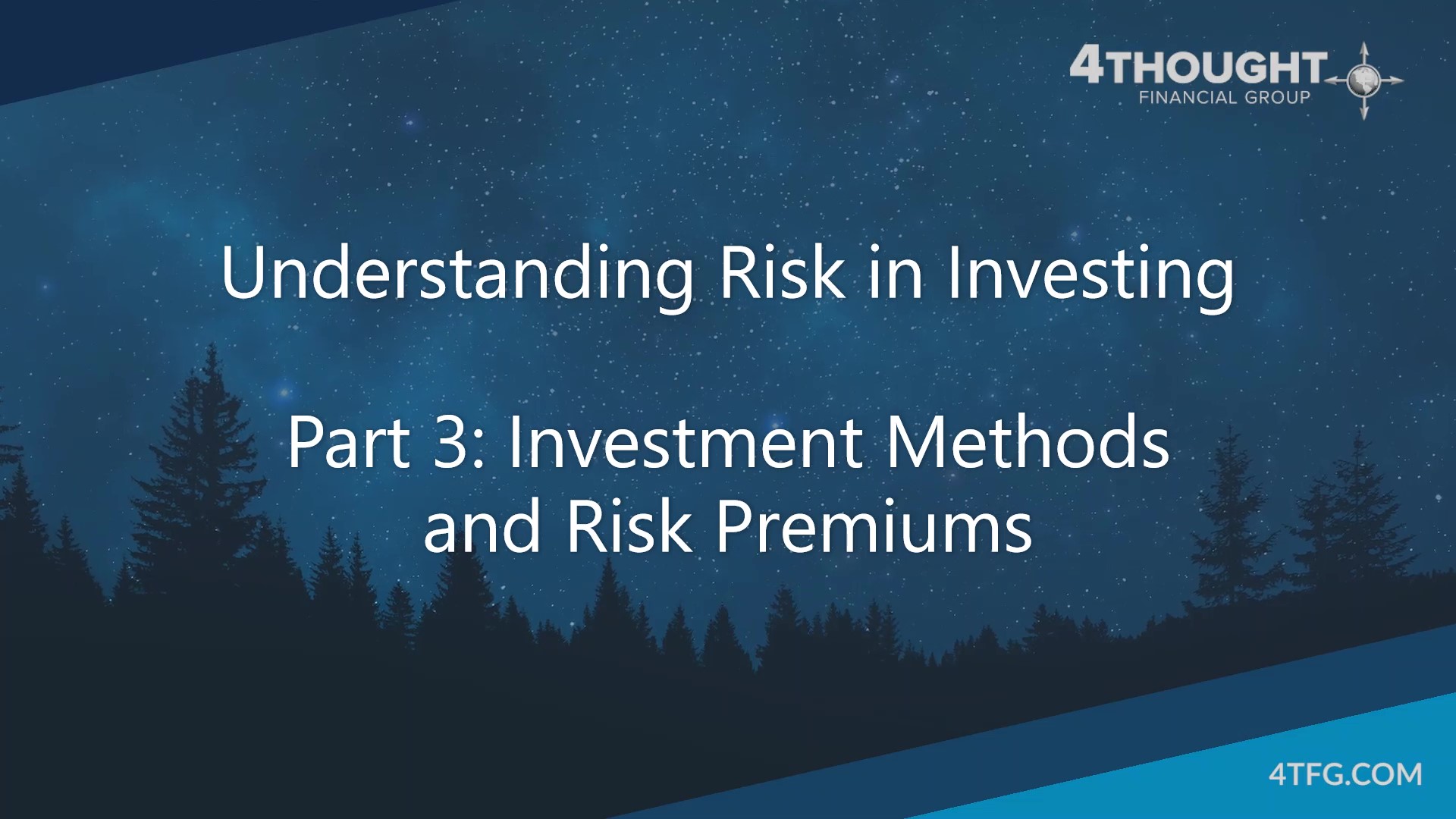

Wealth Management by 4Thought Financial Group
"The comprehensive wealth management we provide involves the coordination and execution of four different types of financial planning: Investment Planning, Estate Planning, Business Succession Planning and Fringe Benefit Planning."
(Co-authored by 4Thought Financial Group CEO Brian Mackey)
The estate probate process can be a long, expensive, frustrating process, often lasting nine months to two years while moving through the courts system, potentially costing thousands of dollars in fees, and leaving beneficiaries in a state of confusion without access to assets during a time in which they are grieving over a family loss.
For these reasons, most individuals with substantial wealth prefer to plan in advance of their own death to avoid and minimize the probate process to the extent possible.
How can one avoid the probate process? While there are several potential answers to this question (and the appropriate ones depend on the specifics of the situation), one possible solution is the Revocable Living Trust (RLT).
A Revocable Living Trust can be created today, while the grantor is still alive (as opposed to a Testamentary Trust, which is created at the death of a grantor), and transfers asset ownership from an individual to a legal entity with its own rules of operation and governance, while still allowing the individual to retain control during his/her lifetime (hence “Revocable”).
This may be done for several reasons, such as a wish to preserve the privacy of the details of an estate (a regular Will subject to the probate process becomes public information), to reduce or eliminate potential disputes and confusion amongst heirs, to segregate assets (for married couples with separate property), or in an effort to exert a degree of control over assets and beneficiary or guardian behaviors after death. But the prime objective of the grantor is typically to avoid the probate process, while still retaining control of the assets during his/her lifetime. An RLT may be even more beneficial for people with assets in multiple states, because it avoids having to go through probate in each state separately (for the bulk of the assets).
Assets held in a Revocable Living Trust are able to bypass the probate courts at the grantor’s death, allowing the ultimate beneficiaries access to the assets much faster (to the degree this is intended), and usually with much less money eaten up in fees. During their lifetime, the grantor can be named both the trustee and the beneficiary of the trust, thus retaining total control. In such cases, the grantor appoints another trustee and beneficiaries to take over at death (as outlined in the document in advance).
While the RLT typically takes precedence over a Will and includes most of the typical features of a Will, it does not fully replace it. The grantor still usually needs a “Pour-Over” Will, which states that any of the grantor’s assets that were not manually transferred into the trust during the grantor’s lifetime are automatically transferred in at his/her death (to the degree they’re eligible). The Pour-Over aspect of the Will does not avoid probate for the assets that were not manually moved into the trust during life, but it ensures that the assets not owned by the trust at death ultimately get protected by the trust’s terms.
RLTs can either terminate at the grantor’s death (in which case the beneficiaries get all assets outright, with no more protections), or the assets may then be automatically moved into a new irrevocable testamentary trust (or trusts) for the benefit of the listed beneficiaries. Either way, there is a step-up in tax cost basis, meaning that any accumulated capital gains on assets held by the RLT prior to the date of death will not be taxable to the beneficiaries (for capital gains tax purposes). It should be noted, however, that an RLT will not by itself avoid or minimize estate taxes. This may require the use of alternative or complementary trust types. For example, RLT documents may be written to take advantage of the Unified Credit at the grantor’s death, where assets will flow into a Credit Shelter Trust up to the lower of the amount imposed by the state or federal estate tax credit, with any remaining balance of assets flowing into a QTIP (Qualified Terminable Interest Property) Trust. Under this scenario, the surviving spouse would continue to have access to these assets for living expense and income purposes during her lifetime. The assets may subsequently go into a GST (Generation Skipping Trust) for each surviving child on the death of the second spouse. All of this may be planned in advance by the original grantor of the Revocable Living Trust.
There are a few additional key points related to administration that anyone considering establishing a Revocable Living Trust should note:
- An attorney must draft the document, usually costing $2,000 to $5,000, and it must be coordinated with the Wills and any other estate planning documents utilized by the grantor and his/her spouse.
- The trust document should acquire its own tax identification number at the time it is created, otherwise this will add an additional step to the operational process at death, in which the accountant will have to apply for a tax ID at that point. It’s usually recommended to get this done in advance, since one of the key purposes of the RLT is to shorten the time to receipt of assets by the beneficiaries in the first place.
- Assets must be transferred into the Trust after it is created and before the death of the grantor in order to avoid probate.
- The trust must annually file an IRS form 1041, which is a trust tax return. A K-1 is also annually issued by the trust to the grantor, and is reportable on his/her individual 1040 tax return (like a partnership distribution).
While a Revocable Living Trust is certainly not for everyone, it can be a valuable tool for alleviating the probate process and for preparing a smooth transition for heirs. If you are considering an RLT, make sure to discuss it in full detail in advance of implementation with your financial advisor, estate attorney, and accountant.
4Thought Financial Group
Concerned about the estate probate process and its potential burden on your heirs? Contact 4Thought Financial Group to find out whether a Revocable Living Trust or other estate planning techniques could help you.








Leave a Comment